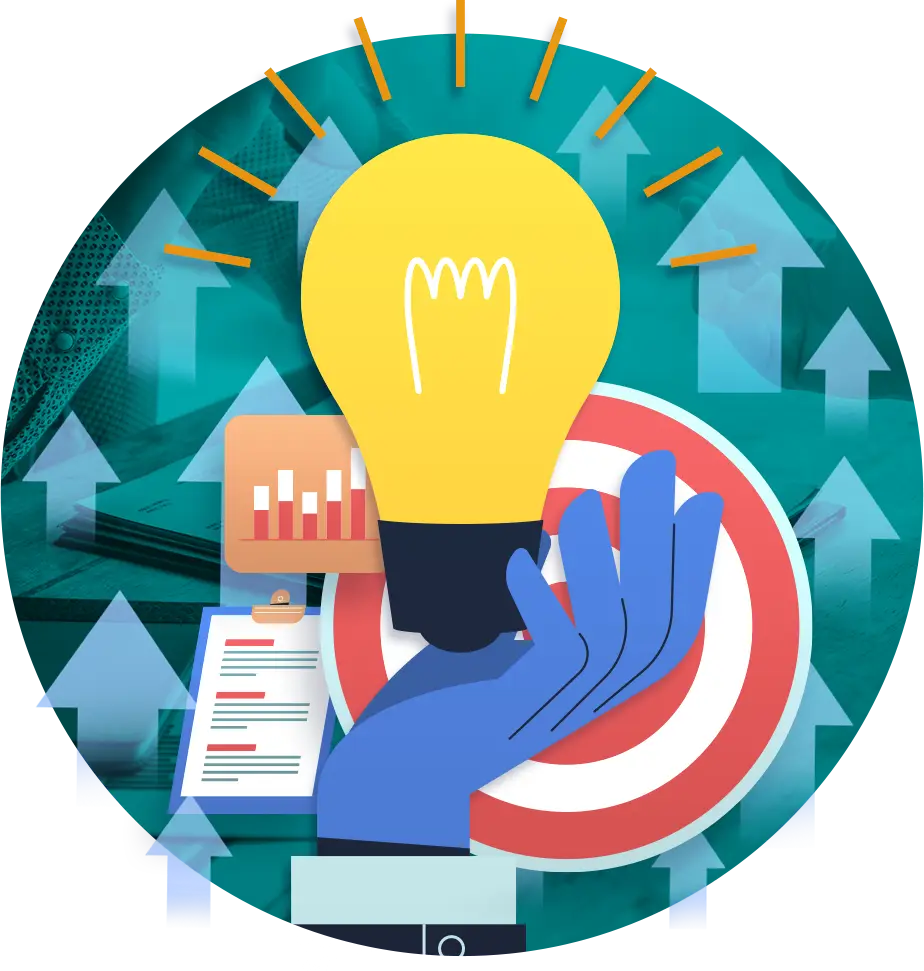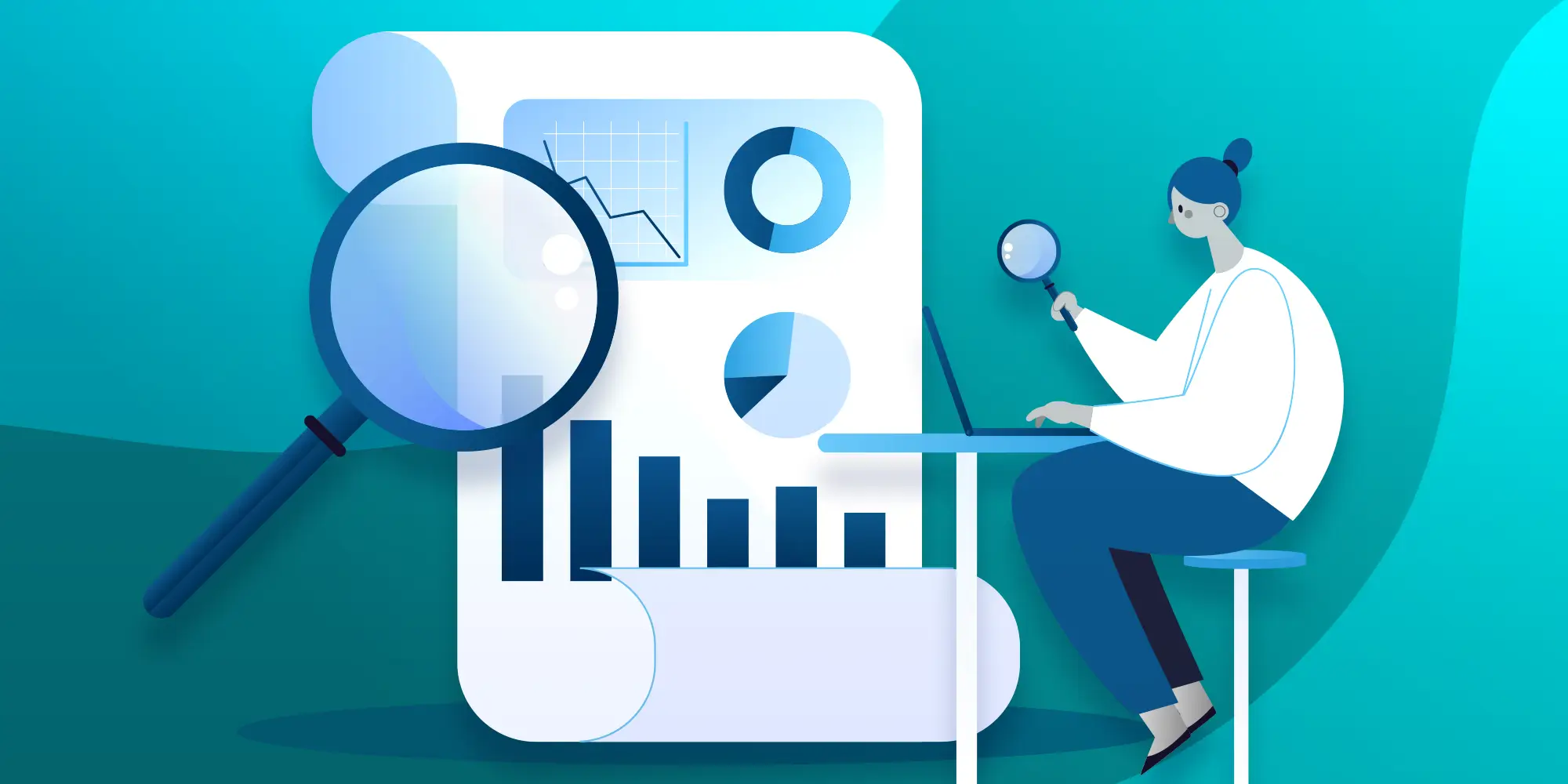Key Takeaway
Discover 15 frequently used data analytics terms so you can discuss your business’s metrics like a pro.
Analyzing your business’s data can be daunting. But so can deciphering data terminology. No worries! We’ve rounded up 15 commonly used data phrases and their definitions so you can (finally) talk about data like an expert.
Conversion Rate
In marketing, a conversion is when a recipient of a marketing message completes a desired action. A conversion rate measures the percentage of users that complete a desired action. For instance, it can be useful to track how many users clicked on a download, subscribed to your newsletter, or purchased a product. To get a conversion rate, divide the number of conversions by the number of visitors you have on your website or social media account.
To get a conversion rate, divide the number of conversions by the number of visitors you have on your website or social media account.
Engagement Rate
A measurement of how many people interacted with digital content versus how many people saw it (and didn’t interact with it). Engagement rates are useful for measuring which blogs and social media posts are most popular with current and potential customers. It can guide your future content strategy and highlight which topics your target audience is most interested in.
Impressions
This term refers to the number of views a piece of content gets. Or to put it another way, content that makes an impression will often have more impressions.
Churn
The rate at which customers stop doing business with a company over a set period. For instance, churn rate can measure how many customers cancel their subscriptions or stop buying your products after 12 months.
Source
A source is an online or offline origin that directs someone to your website. You’re probably familiar with survey questions you’ve received from a business that has asked you, “How did you find us?”. And you might respond with answers like “Google search,” “friend referral,” or “digital ad.”
Session
This phrase means a group of interactions that a user has with your website within a given timeframe. Interactions within a session vary depending on the person who visited your site. These interactions could be viewing your home page, browsing your blog, or clicking on a call-to-action on a landing page. All these interactions take part within a single session, though.
Unique Visitor
Someone who viewed your business’s website at least once during a specific timeframe. Identifiers like IP addresses and cookies make it possible to determine which users are one-time visitors (and “unique”) compared to repeat visitors.
Personally Identifiable Information (PII)
PII is any information you collect about a person that could identify them (whether directly or indirectly). Some examples would be name, email address, phone number, and address. To protect privacy, tools such as Google Analytics, social media platforms, etc. will not provide you with this information in their analytics reports.
Automation
This term denotes an action that triggers in response to a user’s behavior. Say you create an email that instantly gets sent to people as soon as they subscribe to your blog or after they purchase a product. This is an automation.
Attribution
This phrase refers to a reporting strategy that lets you see how different marketing touchpoints influence a person’s progression through the conversion funnel as they transition from visitor to customer. Attribution reports measure things such as which campaigns had the highest ROI and which content formats are most effective at inspiring users to act.
Marketing attribution is a reporting strategy that lets you see how different marketing touchpoints influence a person’s progression through the conversion funnel as they transition from visitor to customer.
Touchpoint
A touchpoint refers to an interaction between a customer and your business. Touchpoint mapping is when you track what kinds of touchpoints lead your customers down the path to conversion. When analyzing this metric, you might find that certain touchpoints are more effective than others at prompting a visitor to make a purchase or request a quote from you. This might lead you to restructure your website’s layout or update the content.
Behavioral Targeting
A marketing method that uses web user information to inform future advertising campaigns. Behavioral targeting can help you know which of your ads would most interest specific subgroups of your target audience based on their browsing habits and online actions.
Retargeting
A type of advertising that aims at winning back those who have visited your website without purchasing a product or service. It does this by using cookies to trigger email reminders of items they were browsing but didn’t buy, or by showing them ads of relevant products or services that they were browsing. A recent study indicated that retargeted ads yield 10x better click-through-rates (CTRs) than display ads.
Retargeted ads generate 10x better CTRs than display ads.
ReadyCloud
Segments
By dividing your target audience into subgroups or “segments,” you can stay more organized with your data and get more out of your analysis efforts. Segmentation lets you categorize customers based on common behaviors, interests, and/or demographics. For example, maybe one of your segments is “new parents in the 20-30 age range” or “Gen Z solopreneurs who need help getting organized as they launch their business”.
Traffic
These are the visitors to your website. Traffic can be further subdivided with the three most common sources being direct, organic, and paid traffic. Direct traffic refers to users who arrive at your website by typing in your website’s URL into their browser or via a saved bookmark. This traffic does not come from a referring website or external source. Organic traffic describes those users that arrive at your website from a search engine or an external link. According to recent research from BrightEdge, 53.3% of all website traffic is organic. Finally, paid traffic is all traffic that comes from ads that are driving to your website.
53.3% of all website traffic comes from organic search.
BrightEdge
Go Deeper with Data
Ready to expand your data expertise and grow your mastery of metrics even more? We love data and we love teaching! Contact us to book a coaching session with a Technology Therapy® Group pro.





